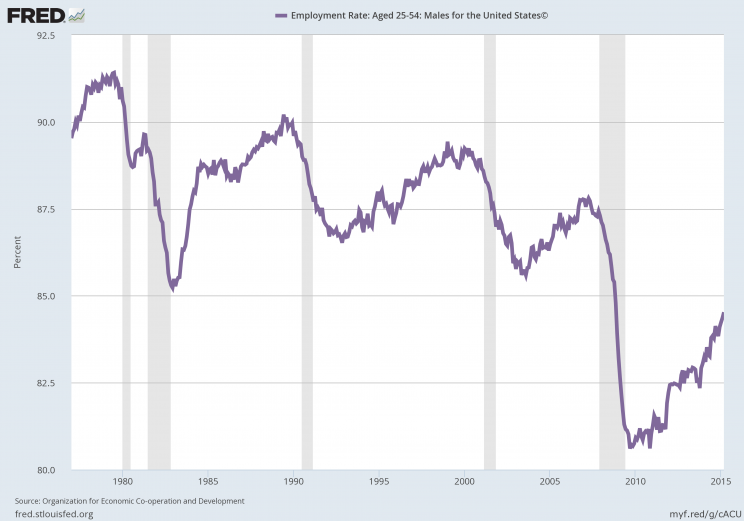Why the rising unemployment rate is great news for Donald Trump

The January jobs report marked the first monthly employment data released under President Donald Trump.
The numbers were pretty good, with nonfarm payrolls growing by 227,000 in January though wage growth, at just 0.1% month-on-month and 2.5% year-on-year, was a bit disappointing.
Additionally, the unemployment rate rose to 4.8% from 4.7%, which might seem bad, but is actually something that Trump might want to be excited about. This is because the rise in the unemployment rate was not due to people losing jobs, but to people joining the workforce.
In January, the civilian labor force increased by 76,000 while the number of folks employed dropped by 30,000. This, however, came amid a 660,000-person drop in the civilian non-institutional population due to updated methods for estimating population. The number of workers classified as unemployed rose by 106,000, while those classified as not in the labor force fell by 736,000.
This increase in the labor force — which includes not only those working but those looking for work — bumped the labor force participation rate up to 62.9% from 62.7% in January. The unemployment rate, again, rose by 0.1%.

All things being equal, additions to the labor force will both 1) increase the participation rate and 2) increase the unemployment rate.
And if there’s one aspect of the labor market that has been consistently derided since the financial crisis, it is the labor force participation rate. While this rate has risen — or at least stopped dropping — over the last 18 months after touching a generational low of 62.4% in September 2015, participations is still poor relative to US history.
“Missing men”
There are, of course, demographic factors at work, as America’s aging workforce has seen Baby Boomers retire at a faster rate than growing-up millennials could replace them.
And research out of the Atlanta Fed back in 2015 indicated that if you factor in folks who don’t work and don’t want to work as well as those who work part-time and want to work part-time, the labor utilization rate was nearing pre-crisis levels.
But in recent years, much has been made of the so-called “missing men,” or the roughly 10 million prime-age men who are not in the labor force.

Generally, this number aims to capture the long-held idea that general economic anxiety and dim prospects about the country’s direction have kept the labor market from fully healing since the financial crisis. These are also the kinds of ideas that underwrite a “grand theory” of why Trump won.
Following Trump’s election, we saw business and consumer surveys surge, particularly small business confidence readings. That’s because Trump’s economic message prevailed, as did a general bullishness around Congress being able to get things done given Republican control of the White House and both houses.
An increase in the labor force last month would certainly lend some credence to the idea that rising confidence around the economy generally could wring out any additional slack remaining in the labor market.
Which, of course, is the kind of narrative that Trump would certainly want to seize on.
On Twitter on Friday, New River Investments portfolio manager Conor Sen said January’s jobs report is good news for those who think there is more labor market slack than headline numbers (i.e. a 4.8% unemployment rate) would suggest. The entry of workers who were, perhaps, thought to be permanently out of the labor market provides backing for this idea.
And so the entry, or re-entry, of folks into the labor market is not only something the president could use to his political advantage, but something US economic bulls should see as a positive development — and could turn around one of the longest-running criticisms of America’s labor market.
—
Myles Udland is a writer at Yahoo Finance. Follow him on Twitter @MylesUdland
Read more from Myles here:

